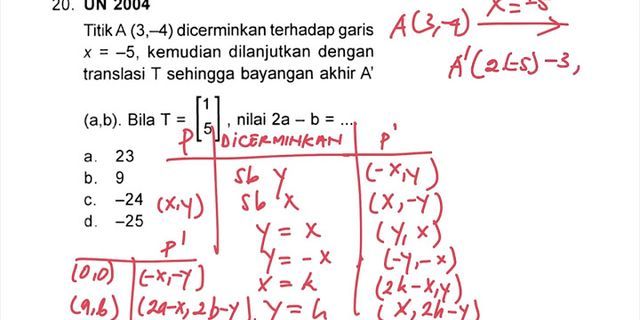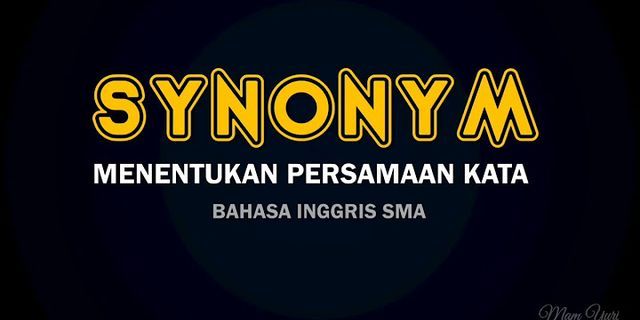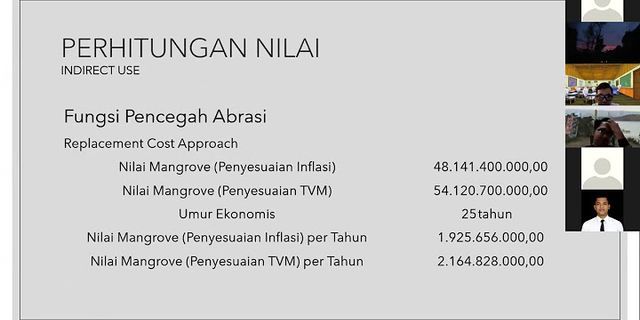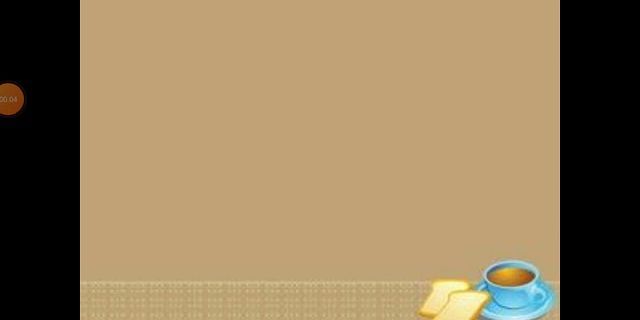Perkerasan kaku telah digunakan di seluruh Indonesia baik jalan nasional, propinsi, kabupaten maupun desa. Persyaratan kuat lentur pada perkerasan kaku menurut Pd T-14-2003 adalah 3-5 MPa. Pada Spesifikasi Umum Bina Marga tahun 2010 revisi 3, kuat lentur yang disyaratkan adalah 45 kg/cm2 atau setara dengan 4,5 MPa. Spesifikasi ini tidak mengatur nilai kuat tekan untuk perkerasan kaku. Pendekatan formula untuk hubungan (alfa) kuat tekan (fc) dan lentur (fs) untuk SNI 2847:2013 bahwa fs = 0,623 Vfc dan Pd T-14-2003 bahwa fs =0,75 Vfc. Tujuan penelitian ini adalah untuk mendapatkan nilai alfa sebagai dasar perancangan. Penelitian ini dilakukan adalah dengan membuat campuran beton dengan 3 variasi fas yaitu 0,46; 0,43 ; 0,40 , dan dengan agregat kasar berabrasi < 20%. Pengujian kuat tekan dan lentur menggunakan SNI 1974: 2011 dan SNI 4431: 2011. Setiap variasi terdiri dari 5 benda uji balok (15 x 15 x 60 cm3) dan 3 buah silinder (diameter 15 x tinggi 30 cm3). Kuat lentur yang didapat digunakan untuk merancang ketebalan perkerasan menggunakan metode NAASRA dan PCA. Dari tebal perkerasan tersebut diperkirakan kebutuhan biayanya. Hasil penelitian menunjukkan bahwa dengan variasi fas 0,46; 0,43; 0,40 pada umur 28 hari didapatkan kuat tekan rata-rata sebesar 28,08 MPa ; 33,47 MPa dan 34,37 MPa. Untuk rata-rata kuat lenturnya sebesar 4,15 MPa; 4,37 MPa dan 4,59 MPa. Nilai korelasi (alfa) antara fs dan fc yaitu 0,78; 0,76 dan 0,78, hasil ini mendekati nilai alfa pada Pd T-14-2003. Desain perkerasan kaku dengan metode NAASRA dan PCA dapat menggunakan nilai kuat lentur, sehingga nilainya tidak harus selalu sebesar 45 kg/cm2, Rigid pavement has been used throughout Indonesia both national, provincial, district and village roads. Flexural strength requirements on the rigid pavement according Pd T-14-2003 is 3-5 MPa. At the 2010 General Specifications Bina Marga revision 3 where quality control is the flexural strength should reach 45 kg / cm2, equivalent to 4.5 MPa. This specification does not set a compressive strength value for rigid pavement. Approach the current formula to the (alfa) strength (fc) and flexural (fs) relationship for SNI 2847: 2013 that fs = 0.623 Vfc and Pd T-14-2003 that fs = 0.75 Vfc. The purpose of this study is to get the value of alfa as the basis of design. This research is done by making a mixture of concrete with 3 variations of fas is 0,46; 0.43; 0.40, and using a rough aggregate of <20%. Compressive strength and flexural testing using SNI 1974: 2011 and SNI 4431: 2011. Where Every variation consists of 5 test object beam (15 x 15 x 60 cm3) and 3 cylinders (diameter 15 x high 30 cm3). Flexural strength obtained is used to design the thickness of pavement using NAASRA and PCA. From the thickness of the pavement is estimated cost requirement. The results showed that the variation of water-cement factor of 0.46; 0.43; 0.40 at 28 days, the compression strength was 28.08 MPa; 33.47 MPa and 34.37 MPa. For flextural strength of 4.15 MPa; 4.37 MPa and 4.59 MPa. The correlation (alfa ) value between fs and fc is 0.78; 0.76 and 0.78, the value is close to the value of alfa on Pd T-14-2003. Design of rigid pavement with NAASRA and PCA methods can use the value of flexural strength, thus not having to adhere to rigid pavement with a flexural strength of 45 kg / cm2. Kata Kunci : perkerasan kaku, kuat tekan, kuat lentur, tebal, biaya
DOI: https://doi.org/10.25299/saintis.2018.vol18(2).3150 Keywords: beton, kuat lentur, kuat tekan, Spesifikasi Binamarga 2010 rev. 3
[ID] Penggunaan konstruksi beton diminati karena beton memiliki sifat-sifat yang menguntungkan seperti ketahanannya terhadap api, awet, kuat tekan yang tinggi dan dalam pelaksanaannya mudah untuk dibentuk sesuai dengan bentuk yang dikehendaki. Tetapi konstruksi beton juga mempunyai kelemahan-kelemahan antara lain kemampuan menahan kuat lentur yang rendah sehingga konstruksinya mudah retak jika mendapatkan regangan lentur. Hal ini menjadikan pengujian kuat lentur beton sebagai persyaratan dalam penerimaan hasil pekerjaan. Namun disisi lain dalam hal pembuatan campuran beton yang selama ini mengacu pada kuat tekan, menjadi tantangan bagi pelaksana yang harus melakukan perencanaan beton (mix design) dan trial mix terlebih dahulu, sehingga perlu dilakukan pengkoreksian. Sehingga penelitian ini bermaksud untuk memperoleh hasil kuat lentur dan kuat tekan beton dengan menghasilkan nilai korelasi kuat lentur beton terhadap kuat tekan beton sesuai kuat lentur dan kuat tekan yang direncanakan maupun disyaratkan. Penelitian ini menggunakan metode Departemen of Environment (DoE) dalam SNI 03-2834-2000 untuk mix design beton. Perencanaan mutu beton K-500 dan kuat lentur rencana fs = 45 kg/ (4,4 MPa) dengan penggunaan bahan tambah superplaticizer 0,5% merk TanCem 20 RA dengan benda uji balok, silinder, dan kubus, dengan slump rencana 30-60 mm. hasil penelitian bahwa pada perawatan 14 dan 28 hari diperoleh hasil pengaruh terhadap beton tanpa superplaticizer 0,5% dengan beton penggunaan bahan tambahan superplaticizer 0,5% terjadi peningkatan pada perawatan 14 hari dengan benda uji balok sebesar 3,26% dan kubus sebesar 22,25%. Peningkatan pada perawatan 28 hari benda uji balok sebesar 3,36%, silinder sebesar 8,09% dan kubus sebesar 7,56%. Terjadi penurunan pada perawatan 14 hari dengan benda uji silinder sebesar 3,21%. Hasil korelasi kuat lentur dengan kuat tekan beton benda uji balok dan silinder, dari hasil mendapatkan nilai korelasi pada perawatan 14 hari tanpa dan dengan tambahan zat addiktif superplaticizer 0,5% didapat persamaan bahwa fs = K√f'c : nilai K sebesar 0,96 dan 0,87, sedangkan pada perawatan 28 hari tanpa dan dengan tambahan zat addiktif superplaticizer 0,5% didapat persamaan bahwa fs = K√f'c : nilai K sebesar 0,86 dan 0,99, maka dapat disimpulkan dari hasil penelitian ini nilai korelasi kuat lentur beton dengan kuat tekan beton bahwa berhubungan sangat kuat yang mana nilai koefisien korelasi di antara 0,80 sampai 1,00. [EN] The use of concrete construction is desirable because concrete has beneficial properties such as resistance to fire, durability, high compressive strength and in its implementation it is easy to be formed in accordance with the desired shape. But concrete construction also has weaknesses such as the ability to hold low flexural strength so that the construction is easily cracked if it gets a flexible strain. This makes testing the flexural strength of concrete as a requirement in receiving work results. But on the other hand in terms of making concrete mixes which have been referring to compressive strength, it is a challenge for implementers who have to do concrete planning (mix design) and trial mix first, so correction is necessary. So that this study intends to obtain the results of flexural strength and compressive strength of concrete by producing a correlation value of the flexural strength of the concrete to the compressive strength of the concrete according to the flexural strength and compressive strength planned or required. This study uses the Department of Environment (DoE) method in SNI 03-2834-2000 for concrete mix design. Planning the quality of K-500 concrete and planned flexural strength fs = 45 kg / cm ^ 2 (4.4 MPa) with the use of added ingredients 0.5% superplaticizer TanCem 20 RA brands with beam specimens, cylinders and cubes, with slump plans 30-60 mm. The results of the study showed that the treatment of 14 and 28 days obtained the effect of concrete without a 0.5% superplaticizer with concrete using 0.5% superplaticizer was increased in 14 days treatment with beam specimens of 3.26% and cube of 22, 25%. The increase in the 28-day treatment of beam specimens was 3.36%, cylinders were 8.09% and cubes were 7.56%. There was a decrease in 14-day treatment with cylindrical specimens of 3.21%. The results of the correlation of flexural strength with concrete compressive strength of beam and cylinder specimens, from the results of obtaining a correlation value on treatment 14 days without and with additional additives 0.5% superplaticizer obtained the equation that fs = K√f'c: K value of 0 96 and 0.87, while the 28-day treatment without and with additional additives of 0.5% superplaticizer obtained the equation that fs = K√f'c: K value of 0.86 and 0.99, it can be concluded from the results of the study This correlation value of concrete flexural strength with concrete compressive strength is very strongly related where the correlation coefficient value is between 0.80 to 1.00.
Al Atira., 2016, Pengaruh Penambahan Serat Seng Pada Campuran Beton Dengan Ukuran Pemotongan Serat Bervariasi, Tugas Akhir, Universitas Islam Riau. Antoni dan Paul Nugraha., 2007. Teknologi Beton. Penerbit C.V Andi Offset, Yogyakarta. Anonim. Diktat Praktikum., 2017, Pedoman Praktikum Teknologi Bahan dan Beton, Fakultas Teknik Universitas Islam Riau. ASTM, 1993, Concrete And Aggregates, Annual Book Of ASTM Standard Vil. 04.02, American Society Fot Testing And Materials, Philadelphia. Dady,T., 2015, Pengaruh Kuat Tekan Terhadap Kuat Lentur Balok Beton Bertulang, Jurnal Sipil Statik, Universitas Sam Ratulangi Manado, Manado. Dipohusodo., Istimawan (1999). Struktur Beton Bertulang Berdasarkan SK SNI T-15-1991-03. Jakarta: PT. Gramedia Pustaka Utama. Ditjen Binamarga, 2011, Spesifikasi Umum, edisi 2010, Kementerian PU. Ditjen Binamarga, 2014, Spesifikasi Umum, edisi 2010 revisi 3, Kementerian PU. Hewes, L.I., 1942, American Highway Practice, Vol II, John Wiley & Sons Inc. Mulyono, T., 2004, Teknologi Beton, Edisi Kedua, Andi, Yogyakarta.Tim Laboratorium Fakultas Teknik Universitas Islam Riau, 2016, Pedoman Praktikum Teknologi Bahan dan Beton, Pekanbaru. Nawy., Edward. G., 1990, Reinforce Concrete a Foundamental Approach, Terjemahan, Cetakan Pertama, Bandung : PT. Eresco. Nilson,A., 1993. Perencanaan Struktur Beeton Bertulang, Edisi Pertama, Paramita Pradnya, Jakarta. Nugraha, P dan Antoni., 2007, Teknologi Beton, Edisi Pertama, Andi, Yogyakarta. Pahrevi,R., 2014, Pengaruh Mixing Time Terhadap Kuat Tekan Beton dan Nilai Slump Dengan Menggunakan Superplaticizer 0,25%, Tugas Akhir, Universitas Islam Riau. Pane,P., 2015, Pengujian Kuat Tarik Lentur Beton Dengan Variasi Kuat Tekan Beton, Jurna; Sipil Statik, Universitas Sam Ratulangi Manado, Manado. Priastiwi, dkk., 2012, Korelasi Umur Beton Pada Kuat Lentur, Media Teknik Sipil, Universitas Diponegoro, Semarang. Sugiyono., 2007, Metode Penelitian Pendidikan Pendekatan Kuantitatif, Kualitatif dan R&D, Alfabeta, Bandung. SNI 4431:2011, 2011, Cara Uji Kuat Lentur Beton Normal Dengan Dua Titik Pembebanan. Badan Standararisasi Nasional SNI 03-2834-2000, 2000, Tata Cara Pembuatan Rencana Campuran Beton Normal, Badan Standarisasi Nasional. SNI 03-2847-2002, 2002, Tata Cara Perhitungan Struktur Beton Untuk Bangun Gedung, Badan Standarisasi Nasional. SNI 03-1974-1990, 1990, Metode Pengujian Kuat Tekan Beton, Badan Standarisasi Nasional. Tjokrodimulyo., Kardioyono, 1992, Teknologi Beton. Biro Penerbit, Yogyakarta.
Copyright (c) 2018 Author  This work is licensed under a Creative Commons Attribution-ShareAlike 4.0 International License.  This work is licensed under a Creative Commons Attribution-ShareAlike 4.0 International License. Copyright. This is an open access article which means that all content is freely available without charge to the user or his/her institution. Jurnal Saintis allows the author(s) to hold the copyright without restriction. The copyright in the text of individual articles (including research articles, opinion articles, and abstracts) is the property of their respective authors distributed under the terms of the Creative Commons Attribution-ShareAlike 4.0 International License which permits unrestricted use, distribution, and reproduction in any medium. Users are allowed to read, download, copy, distribute, search, or link to full-text articles in this journal without asking by giving appropriate credit, provide a link to the license, and indicate if changes were made. Abstract viewed = 17523 timesPDF (Bahasa Indonesia) downloaded = 7452 times |

Pos Terkait
Periklanan
BERITA TERKINI
Toplist Popular
#1
#2
#4
#5
#6
#7
Top 8 apa itu benedict dan biuret? 2022
1 years ago#8
#9
#10
Top 6 apa itu self pick up grabfood? 2022
2 years agoPeriklanan
Terpopuler
Periklanan
Tentang Kami
Dukungan

Copyright © 2024 toptenid.com Inc.


















